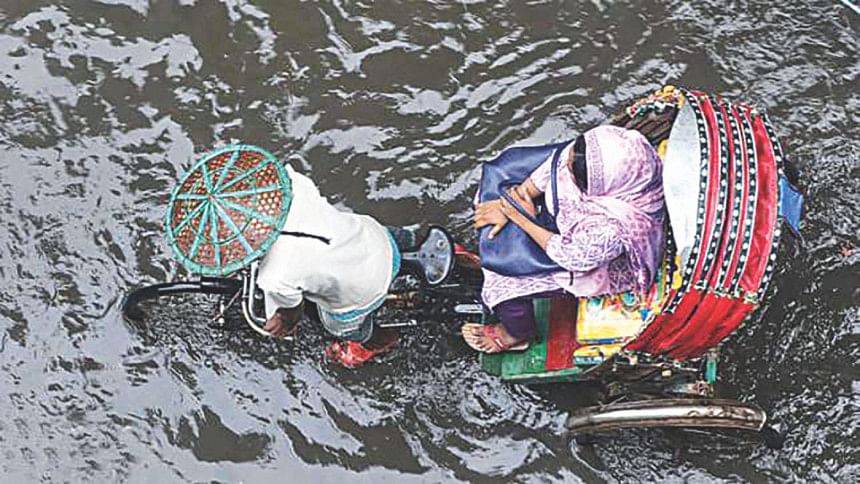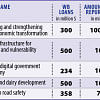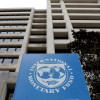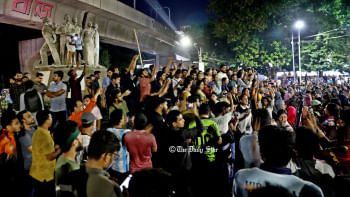Killing the environment

A recent World Bank report—an environmental analysis of Bangladesh—should erase any remaining doubts about the critical level that environmental pollution has reached in the country.
The report titled "Enhancing Opportunities for Clean and Resilient Growth in Urban Bangladesh" should be an eye-opener for policymakers who seem to have had their eyes set on boosting economic growth alone without paying attention to the concomitant environmental costs. The data shows that deaths caused by pollution in 2015 in Bangladesh stand at 28 percent—the highest in South Asia. In the same year, there were around 234,000 deaths due to environmental pollution and related health risks, including 80,000 in urban areas. This is more than ten times the number of deaths resulting from road accidents in 2015.
That the environmental situation has come to this is hardly surprising. The filthy outside air that the average Dhaka dweller has become so accustomed to breathing is just one of the daily manifestations of the city's worsening environmental conditions. This is a major reason behind Dhaka slipping down in the Economist Intelligence Unit's liveability index. It went from being the fourth least liveable city in 2017 to being the second worst this year—now ranked only one notch above war-torn Damascus.
Despite there being more than 25 environment-related laws, policies and guidelines, pollution in the country has increased dramatically in the last few decades. While the list of factors responsible for the exponential rise in pollution is a long one, the underlying problems are a culture of non-implementation of existing laws and a general mindset of total disregard for the environment. In the absence of implementation of relevant laws, the effects of the dual threat of urbanisation and industrialisation to the environment have been far-reaching, particularly for the capital Dhaka. For urban planners and city engineers, modern-day Dhaka serves as a microcosm of urbanisation gone haywire.
As people from all over the country throng to the capital, Dhaka seems to have reached its saturation point in terms of provision of basic infrastructure and services. And the impact on the living conditions of Dhaka as a result has been devastating. Although urbanisation and increase in income levels are thought to be accompanied by a remarkable improvement in the standard of living—and this has been the case for a sizeable population of the country—the resulting environmental impact has now reached an unbearable level that threatens to undo much of what we have achieved.
It is the lower strata of society that is bearing the brunt of the consequences of the environmental havoc being wreaked by unplanned urbanisation. For instance, in Dhaka, heavy metal-contaminated sites are mostly located in poorer neighbourhoods—making the poor extremely vulnerable to lead contamination. This can lead to IQ loss in children and increases the risk of miscarriages and stillbirths for pregnant women. The fact that low-income groups are disproportionately faced with many such deadly health risks has repeatedly been highlighted by researchers over the years but sadly very little has been done to address these concerns. Urban slums—a modern-day paradox of cities' growth—are mushrooming and so is their population. According to World Bank, the latter is growing at double the average urban rate, which means that the situation will only get worse if the myriad issues affecting slum dwellers' living conditions continue to be neglected. Lack of basic hygiene and sanitation and clean drinking water, for instance, are some of the most pressing issues in Dhaka's slums. A study conducted early last year came up with this startling finding: water samples collected by slum dwellers from the last delivery point had 99 percent faecal contamination. There are many reasons for this including a network of ageing damaged underground pipelines, lack of waste disposal mechanisms and a poorly managed sewerage system. This is perhaps what you'd call unplanned urbanisation at its worst.
The current trend of urbanisation in Bangladesh, if allowed to continue in the years to come, would spell death for its cities' liveability. Estimates already show that the national urban population rate is expected to increase from 28 percent of the country's entire population today to 40 percent by 2025 (World Bank, 2015). This means that almost half of Bangladesh's population will be living in cities only seven years from now. We are already witnessing the horrific consequences of decades and decades of encroachment upon wetlands, destruction of rivers and filling up of low-lying areas in the capital—the worsening waterlogging situation every year after only minutes of rain being one of them.
Whereas countries around the world are increasingly prioritising proper urban planning—including green infrastructure and low-carbon solutions to urban mobility—urbanisation in Bangladesh is being led by thoughtless development. On paper, good plans do exist—but they are just not being properly implemented. For instance, most of the conservable flood flow zones earmarked in the detailed area plan (DAP) published in an official gazette in 2010 were filled up giving into demands of real estate developers. Not much progress has been made either with regard to making greater Dhaka pedestrian-friendly despite this being one of the focal points of the Strategic Transport Plan.
Environmental degradation is one of the unfortunate by-products of 21st-century urbanisation and industrialisation. And so aspirations of higher economic growth must be based on a smart urban development model that takes into account environmental concerns. In the context of Bangladesh, this would require empowering and reforming institutions at the national level. One of the many recommendations made in the World Bank report is reforming the Department of Environment and equipping it with adequate resources and skilled staff in order to respond effectively to environmental issues. Another oft-repeated point made in regard to urban planning and environmental management in Bangladesh is the need to decentralise. This cannot be highlighted enough. Decentralising to division and district levels is the need of the hour so that the areas with the highest levels of pollution can be prioritised. Similarly, a lack of local-level urban planning partially explains why unplanned urbanisation in the country has spiralled out of control. Departmental and ministerial coordination is yet another longstanding problem that just can't seem to be solved. This not only hampers implementation of existing plans but also leads to confusion and gives leeway to departments and agencies to play the blame game and evade accountability—as is the case every time the city becomes inundated after minutes of rainfall and Wasa and Dhaka city corporations keep passing the buck to one another.
The severe environmental impact on Dhaka and other cities cannot simply be passed off as a result of rural-to-urban migration—it's a direct consequence of thoughtless urbanisation. It is a result of the lack of an urban development model that puts people, their wellbeing and the environment first. The lack of accountability and transparency in the way many of the existing plans are being implemented—if at all—continues to be a major thorn in our side. It's time policymakers understood that urbanisation and growth and the liveability of a city are not mutually exclusive, and thus environmental degradation cannot simply be swept aside or justified as an "inevitable" by-product of growth. The slow environmental destruction we are witnessing today is the consequence of a failure to plan for and execute a vision of a liveable city.
Nahela Nowshin is a member of the editorial team at The Daily Star.










Comments